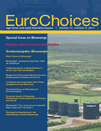Biofuel Policies in the EU, US and Brazil Les politiques en matière de biocarburants dans l’Union européenne, aux États-Unis et au Brésil Politikmaßnahmen zu Biokraftstoffen in der EU, den USA und Brasilien
Les politiques en matière de biocarburants dans l’Union européenne, aux États-Unis et au Brésil
Politikmaßnahmen zu Biokraftstoffen in der EU, den USA und Brasilien
summary
enBiofuel Policies in the EU, US and Brazil
The development of biofuels has been one of the most visible and controversial manifestations of the use of biomass for energy. Biofuels policies in the EU, US and Brazil have been particularly important for the development of the industry in these three important markets. All three have used a variety of measures, including consumption or use mandates, tax incentives and import protection to promote the production and use of biofuels. Despite this, it is uncertain whether the EU will achieve its objective of a 10 per cent share for renewables in transport fuels by 2020. The US is also running into difficulties in meeting consumption mandates for biofuels. Questions are being raised about the continuation of tax credits and import protection. Brazil has liberalised its domestic ethanol market and adopted a more market-oriented approach to biofuels policy, but the management of domestic petroleum prices and the inter-relationship between the sugar market and ethanol production are important factors affecting domestic consumption and exports. In both the EU and the US an ongoing debate about the benefits of reliance on biofuels derived from food crops and concern about the efficacy of current biofuels policies may put their future in doubt.
Abstract
frLe développement des biocarburants a représenté l’une des manifestations les plus controversées et visibles de l’utilisation de la biomasse pour la production d’énergie. Les politiques en matière de biocarburants dans l’Union européenne, aux États-Unis et au Brésil ont été particulièrement importantes pour le développement de cette industrie dans ces trois grands marchés. Tous trois ont mis en place une variété de mesures, y compris des obligations sur l’utilisation et la consommation, des incitations fiscales et de la protection à l’importation pour promouvoir la production et l’utilisation des biocarburants. En dépit de cela, il n’est pas certain que l’Union européenne atteigne son objectif d’incorporation de 10 pour cent d’énergies renouvelables dans les carburants utilisés pour le transport d’ici 2020. Les États-Unis s’acheminent également vers des difficultés à remplir leurs obligations de consommation de biocarburants. Le maintien des crédits d’impôt et de la protection à l’importation est mis en question. Le Brésil a libéralisé son marché intérieur de l’éthanol et a adopté une approche plus orientée par le marché pour sa politique en matière de biocarburants, mais la gestion du prix intérieur du pétrole et les interrelations entre le marché du sucre et la production d’éthanol affectent la consommation intérieure et les exportations de manière importante. Le débat qui se tient actuellement dans l’Union européenne et aux États-Unis sur les avantages que représente le recours aux biocarburants issus de cultures alimentaires et les inquiétudes sur l’efficacité des politiques actuelles en matière de biocarburants peuvent faire douter de leur pérennité.
Abstract
deMit der Entwicklung von Biokraftstoffen zeigt sich eine der sichtbarsten sowie umstrittensten Verwendungsarten von Biomasse zur Energiegewinnung. Die Politikmaßnahmen zu Biokraftstoffen in der EU, den USA und Brasilien waren bislang für die Entwicklung des Sektors auf diesen drei wichtigen Märkten von besonderer Bedeutung. Alle drei haben bereits zahlreiche Maßnahmen eingesetzt, wie z.B. Verbrauchsmandate oder Beimischungszwang, Steueranreize und Importschutz, um die Erzeugung und die Verwendung von Biokraftstoffen zu fördern. Ungeachtet dessen bleibt es unklar, ob es der EU gelingt, den angestrebten Anteil von zehn Prozent für erneuerbare Energien im Bereich Transportwesen bis 2020 zu erreichen. Es bereitet den USA zudem Schwierigkeiten, die Verbrauchsmandate für Biokraftstoffe zu erfüllen. Es stellt sich im Moment die Frage, ob Steuervergünstigungen und Importschutz beibehalten werden sollten. Brasilien hat zwar seinen inländischen Ethanolmarkt liberaler gestaltet und einen marktorientierteren Ansatz für seine Politik zu Biokraftstoffen gewählt – die Handhabung der inländischen Erdölpreise und die wechselseitigen Beziehungen zwischen dem Zuckermarkt und der Ethanolerzeugung stellen jedoch wichtige Faktoren dar, welche den inländischen Verbrauch und die Exporte beeinflussen. Die gegenwärtige Debatte über die Vorteile der Gewinnung von Biokraftstoffen aus Feldfrüchten, die für den Verzehr angebaut werden, und Bedenken hinsichtlich der Wirksamkeit von aktuellen Politikmaßnahmen zu Biokraftstoffen könnten sowohl in der EU als auch in den USA eine unsichere Zukunft für Biokraftstoffe bedeuten.
The development of biofuels has been one of the most visible and controversial manifestations of the use of biomass for energy. In this article we discuss the current situation and future prospects in the EU, US and Brazil, focusing particularly on biofuel policies.
EU policies
The EU justifies its support for biofuels as part of its efforts to promote renewable energy in its fight against climate change, although energy security has been a concern, and biofuel policies have been enthusiastically supported by the farm lobby. The use of biofuels for transport has varied enormously among Member States, reflecting in part differing perspectives on ‘green’ energy. In Germany, for example, pure biodiesel was duty-free until 2004, giving it a competitive advantage; lower duties were then applied to biofuels blended with mineral oils. In contrast, there were no tax concessions for biofuels in the UK until 2002, and then only for biodiesel, until this was extended to bioethanol in 2005.
A 2003 EU Directive (2003/30/EC) established national targets for the use of biofuels with a ‘reference value’ of 2 per cent, calculated on the basis of energy content for petrol and diesel for transport purposes by the end of 2005, and 5.75 per cent by the end of 2010. The actual EU market share in 2005 was 1 per cent; with only Germany and Sweden meeting the EU target. In 2010 EU usage was estimated to be 4.8 per cent, mostly composed of biodiesel. In 2007, imports provided 25 per cent of biodiesel and 31 per cent of bioethanol supplies. The EU has experimented with farm policy measures: allowing energy crops to be grown on set-aside land, and elsewhere paying a per hectare subsidy on a maximum total area. These two measures were eliminated as a result of changes in the Common Agricultural Policy.
“Les inquiétudes sur l’efficacité des politiques actuelles en matière de biocarburants aux États-Unis et dans l’Union européenne peut faire douter de leur pérennité.”
The current aspiration is that renewables should have a 20 per cent share of total EU energy consumption by 2020. The Renewable Energy Directive of 2009 (2009/28/EC) specifies a minimum share for renewables of 10 per cent in energy used for transportation in each member state by 2020. Special rules apply to air transport, for calculating the contribution from renewable electricity, and for second-generation biofuels. It is up to member states how to achieve the targets. Many have used preferential tax rates for biofuels, but a number (including the UK) are now switching to consumption or blending mandates.
The Directive also establishes ‘sustainability criteria’ for biofuels (or bioliquids if used for other renewable energy purposes) that must be met to benefit from incentive schemes and count towards the 2020 mandates. Biofuels must demonstrate a direct GHG emission saving of at least 35 per cent, rising to 60 per cent from 2018 for production capacity installed after January 2017; and show that they are not grown on land which had ‘high biodiversity value’, ‘a high carbon stock’, or was peatland in January 2008. The Commission was asked to report on likely GHG emissions from indirect land-use change. It did so inconclusively in December 2010; a further report was due in July 2011 but was not forthcoming. Among the options under consideration are increases in the minimum GHG-saving threshold and changes to the calculation of indirect land-use impacts (see the article on environmental dimensions of bioenergy development by Marshall, Weinberg, Wunder and Kaphengst in this issue).
The Directive sets out standard values for GHG savings for various feedstocks. Alternatively producers can present evidence to demonstrate compliance. Indonesia and Malaysia have expressed concern about the value used for palm oil, claiming it to be discriminatory and potentially actionable in the WTO. Whilst the US has expressed confidence that its soybean oil can achieve the GHG-savings required, it has complained that technical specifications favour the use of EU-grown rapeseed.
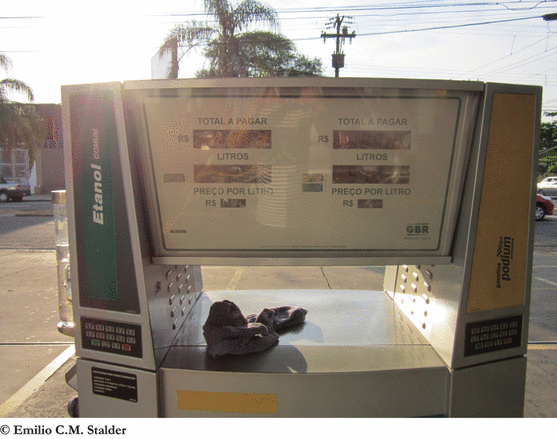
Most biodiesel is imported as fatty-acid mono-alkyl ester, although other tariff lines can apply depending on chemical composition. Some raw materials (such as palm oil) are imported as feedstocks. Bioethanol is imported either as denatured ethanol, as un-denatured ethanol at a higher duty, or in petrol blends under other tariff lines. The US Department of Agriculture has claimed that most EU members only allow blending of un-denatured ethanol, thereby forcing potential imports into the higher tariff bracket. The least-developed countries under the Everything but Arms initiative, and the African, Caribbean and Pacific states (except South Africa) under the Economic Partnership Agreements, have duty free access.
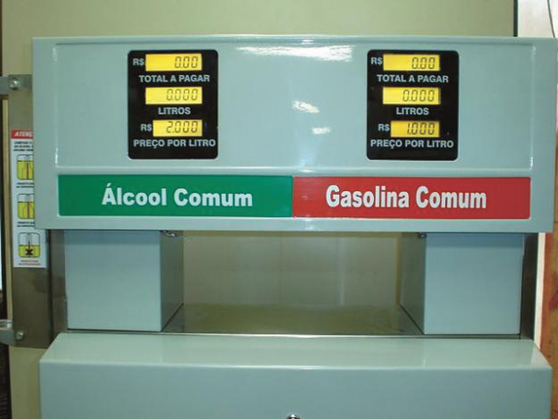
Future prospects. It is uncertain whether the EU will achieve the objective of a 10 per cent share for renewables in transport fuels by 2020. Political resolve might weaken as a result of growing criticism of indirect land-use change, limited GHG savings, and potential impacts on food prices. Member states may fail to put in place mechanisms to achieve the target. For example, the current UK mandate plateaus at 5 per cent of fuel supplies in 2013. Fuel suppliers may judge that the cost of non-compliance is lower than the cost of compliance. In the UK, suppliers are allowed to buyout part or the whole of their obligation to supply renewable fuels, potentially compromising the ability to deliver on the 10 per cent commitment. What penalties will apply if EU members fail to deliver is unclear.
US policies
The development of US biofuels has largely focused on ethanol derived from maize (corn). Biodiesel from soybeans and other biofuels make a modest contribution. The market for ethanol has been bolstered by higher gasoline prices and a ban on the use of Methyl Tertiary-Butyl Ether (MTBE) as a fuel oxygenate in many states due to concerns about contamination of groundwater by that product. The US is now the leading producer of ethanol, accounting for more than half of world production. As a result, its policies can have a significant impact on both world ethanol and maize markets.
Three major policy measures have promoted the use of maize-based ethanol: 1) blenders’ tax credits; 2) import tariffs; and 3) mandates. Fuel suppliers can claim a tax credit for blending biofuels with petroleum-based fuels. To encourage the use of domestic ethanol there is a 2.5 per cent ad valorem MFN tariff and a specific tariff of 54 cents per gallon; limited imports from Caribbean countries are allowed under preferential terms. In December 2010, legislation reauthorised a one-year extension of an ethanol tax credit (Volumetric Ethanol Excise Tax Credit) of 45 cents per gallon, a 1 dollar per gallon biodiesel tax credit, and the specific tariff on imported ethanol. Finally, the Renewable Fuel Standard (RFS), which was initially established by the Energy Policy Act of 2005 and expanded by the Energy Independence and Security Act of 2007, mandates minimum biofuel use levels (increasing annually) through 2022, although there is no specific mandate for ethanol derived from maize. The administrator of the Environmental Protection Agency (EPA) has the authority to waive annual mandates if there is inadequate domestic supply or their implementation would severely harm the economy or environment of a State, a region, or the US.

A complex system of identification codes (called Renewable Identification Numbers or RINs) is used to verify that the mandated amount of ethanol is actually blended with gasoline. Individual blenders must demonstrate that they have purchased a sufficient number of RINs to meet their obligations or face penalties. An individual blender can purchase excess RINs from others who have used more than the required quantity. This provides an incentive to blend renewable fuel close to where it is supplied, hence reducing overall costs.
The rapid expansion in ethanol production means that the domestic industry is approaching a so-called ‘blend wall’. Gasoline-powered vehicles constructed prior to 2001, which make up roughly 40 per cent of the fleet, are unable to use fuel with more than 10 per cent ethanol (E10) without risking mechanical damage. In January 2011 EPA approved the use of up to 15 per cent ethanol (E15) for vehicles constructed since 2001, but uptake is expected to be slow. The market for higher ethanol blends is limited by a lack of appropriate fuel infrastructure and suitable vehicles. Fortunately for the US industry, export demand has recently increased due to high world ethanol prices, easing downward pressure on domestic prices.
Current US biofuels policies could have unintended consequences. As the domestic ethanol market becomes saturated, the tax credit exerts downward pressure on the price of blended fuel. This could actually encourage fossil fuel consumption by lowering overall fuel prices. In addition, since the payment of tax credits is based on how much ethanol is blended rather than where fuel is ultimately used, it is possible that exports could be encouraged. There are reports that blended fuel is being shipped to Canada, the Netherlands, and other countries. In that case, the tax credit acts as an export subsidy and may invite countervailing duties. Such duties are already applied by the EU on biodiesel blends imported from the US.
“Bedenken hinsichtlich der Wirksamkeit von aktuellen Politikmaßnahmen zu Biokraftstoffen könnten sowohl in der EU als auch in den USA eine unsichere Zukunft für Biokraftstoffe bedeuten.”
Future prospects. Mandated quantities for renewable fuel are set to rise steadily from roughly 14 billion gallons in 2011 to 36 billion gallons by 2022. The Renewable Fuel Standard (RFS) involves various sub-mandates (see Figure 1), including ones that cover so-called second-generation biofuels (cellulosic biofuel mandate) whose economic viability remains to be demonstrated. As noted earlier, one implication is that if domestic ethanol consumption continues to be constrained and mandates are not waived by the EPA, increased supplies of ethanol could be directed to the international market. Furthermore, part of the RFS mandate, the so-called advanced biofuel mandate, would probably have to be filled by importing foreign sugarcane-based ethanol (or biodiesel) if no domestic alternatives emerge. This could result in a situation in which the US is simultaneously importing sugarcane-based ethanol and exporting maize–based ethanol.
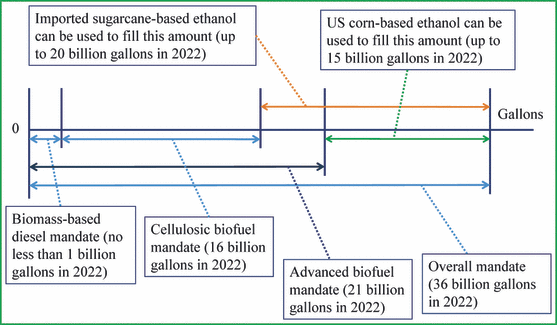
The Renewable Fuel Standard

In the long run, technical constraints on ethanol use may be eased if the number of suitable vehicles increases and the fuel delivery infrastructure is enhanced. But the long-term viability of biofuels in the US is uncertain. The impact of maize-ethanol on food prices, for example, has become an increasingly contentious issue. Pressure is growing to eliminate the tax credit as part of measures to address the federal budget deficit, and there is pressure to reduce or eliminate the tariff on imports. For those concerned about climate change, the net reduction in GHG emissions from US biofuels is contested. For these and other reasons, future reliance on domestically-produced biofuels may be open to question.
Brazil’s policies
Brazil has one of the most successful biofuels industries in the world based on hydrated ethanol (a substitute for gasoline) and anhydrous alcohol (for blending with gasoline) produced from sugarcane. The development of the industry dates back to 1933 when the Institute of Sugar and Alcohol (IAA) was established. In 1975 the National Program of Alcohol (Proalcool) was created to promote domestic energy supplies and reduce petroleum imports. For more than 15 years, Proalcool provided support to producers of ethanol and others involved in the industry, but this was gradually eliminated beginning in the late 1980s; the sugarcane and hydrated ethanol markets were fully liberalised in 1999.
Ethanol production was originally promoted through support prices for sugar, ethanol and sugarcane, production and export quotas, and subsidised credit. Between 1975 and 1979, financing for sugarcane production and processing was provided under favourable interest rates and repayment terms. Incentives were also provided for ethanol consumption through lower taxes on alcohol-fuelled vehicles. Despite these measures, ethanol consumption fluctuated substantially until the late 1990s. Adoption was hindered by poor vehicle technology as well as relatively low gasoline prices. Higher sugar prices, particularly towards the end of the 1980s, diverted sugarcane away from ethanol production and periodic supply shortages reduced consumer confidence. A blending mandate for anhydrous ethanol guaranteed some demand for the product, but the consumption of hydrated alcohol fell drastically. The introduction of flex-fuel cars in 2003 marked the beginning of a recovery for the industry by making hydrated ethanol more attractive to consumers and increasing demand.
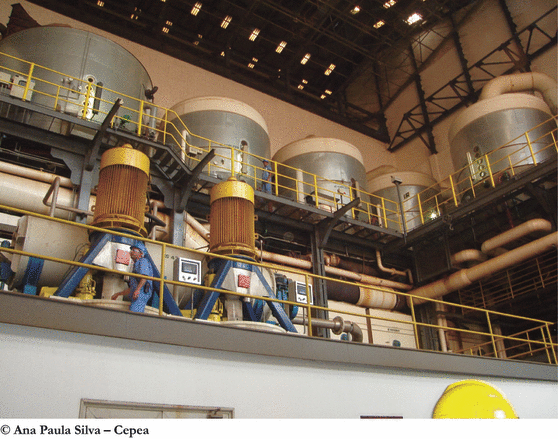
Despite liberalisation of the ethanol market, the government exerts considerable influence on domestic fuel prices. The most important measure is the mandatory blending of anhydrous ethanol with gasoline. Since the beginning of the 1990s, a 20–25 per cent ethanol blend ratio has been maintained. Another important measure is a levy charged on fuel. Ethanol is exempt and the levy has been varied to reduce the impact of international oil price variability on the domestic energy market. Figure 2 illustrates the impact of these measures on prices. In general, ethanol prices (for both hydrous and anhydrous ethanol) have tracked the price of sugar and the mandated blend ratio with gasoline has varied inversely with ethanol/sugar prices. A key objective has been to keep inflation under control since gasoline is an important component of the consumer price index.
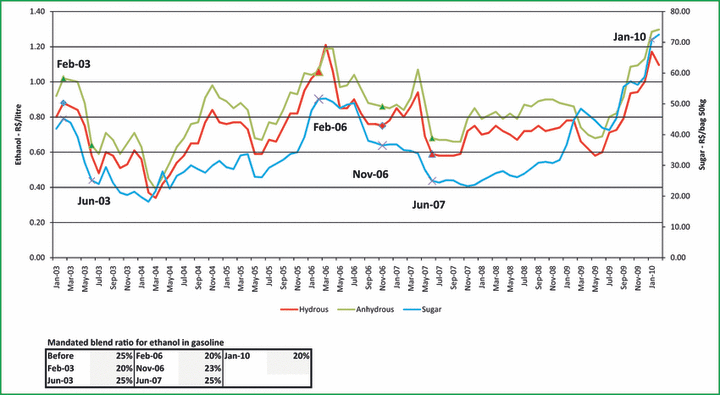
Brazilian domestic prices: ethanol/sugar and government rules for gasoline blend Source: Cepea and MAPA.
Tax incentives continue to affect Brazil’s ethanol market. Some states (e.g. São Paulo) apply lower sales taxes on biofuels than fossil fuels, which can affect demand, particularly for consumers with flex-fuel vehicles. Some states also apply a lower annual tax on flex-fuel vehicles. Roughly 90 per cent of Brazil’s new car sales in 2009 were flex-fuel vehicles.
“Concerns about the efficacy of current biofuel policies in both the US and the EU may put their future in doubt.”
Future prospects. The prospects for biofuels in Brazil must be viewed in the context of the country’s overall energy policy. Current ethanol policies, for example, are partly designed to keep inflation under control – an important concern in a country that has experienced several destabilising periods of high inflation. Brazil has considerable potential to expand ethanol production from sugar, although the pace of expansion will be influenced by energy prices and the availability of funds for investment. Unlike maize, whose use as a feedstock for ethanol can have a major impact on food prices, the use of sugar is less problematic in this regard.
Brazil is already an exporter of ethanol, although there has been a significant reduction recently due to the attractiveness of world sugar prices. Domestic consumption accounts for most of the ethanol produced in Brazil and this is likely to continue. The current rate of investment in sugarcane growth and processing facilities seems unlikely to generate enough production to meet both domestic and international demand, and shortages are possible. Reductions in trade barriers for ethanol in Europe and the US and the elimination of the US tax credit could improve the outlook for Brazilian exports and promote additional investment in the industry. One further development could be the growth of exports of ethanol/gasoline blends. Significant offshore petroleum deposits have been discovered, creating the possibility that Brazil could become a major fuel exporter with the ability to meet demands for various petroleum blends in other countries.
Policies add to uncertainty for the future of biofuels
In all three jurisdictions biofuel policies are important in shaping the market for biofuels, but more so in the EU and the US than in Brazil. As a low cost supplier, Brazil has export aspirations, already exporting bioethanol to the UK for example, despite tariff barriers. The complex array of investment and tax incentives, mandates, technical specifications and sustainability criteria that apply to biofuels in the EU and the US means that the development of biofuels is far removed from being market-driven. Continuing concerns about the efficacy of current biofuel policies in both the US and the EU may put their future in doubt.



